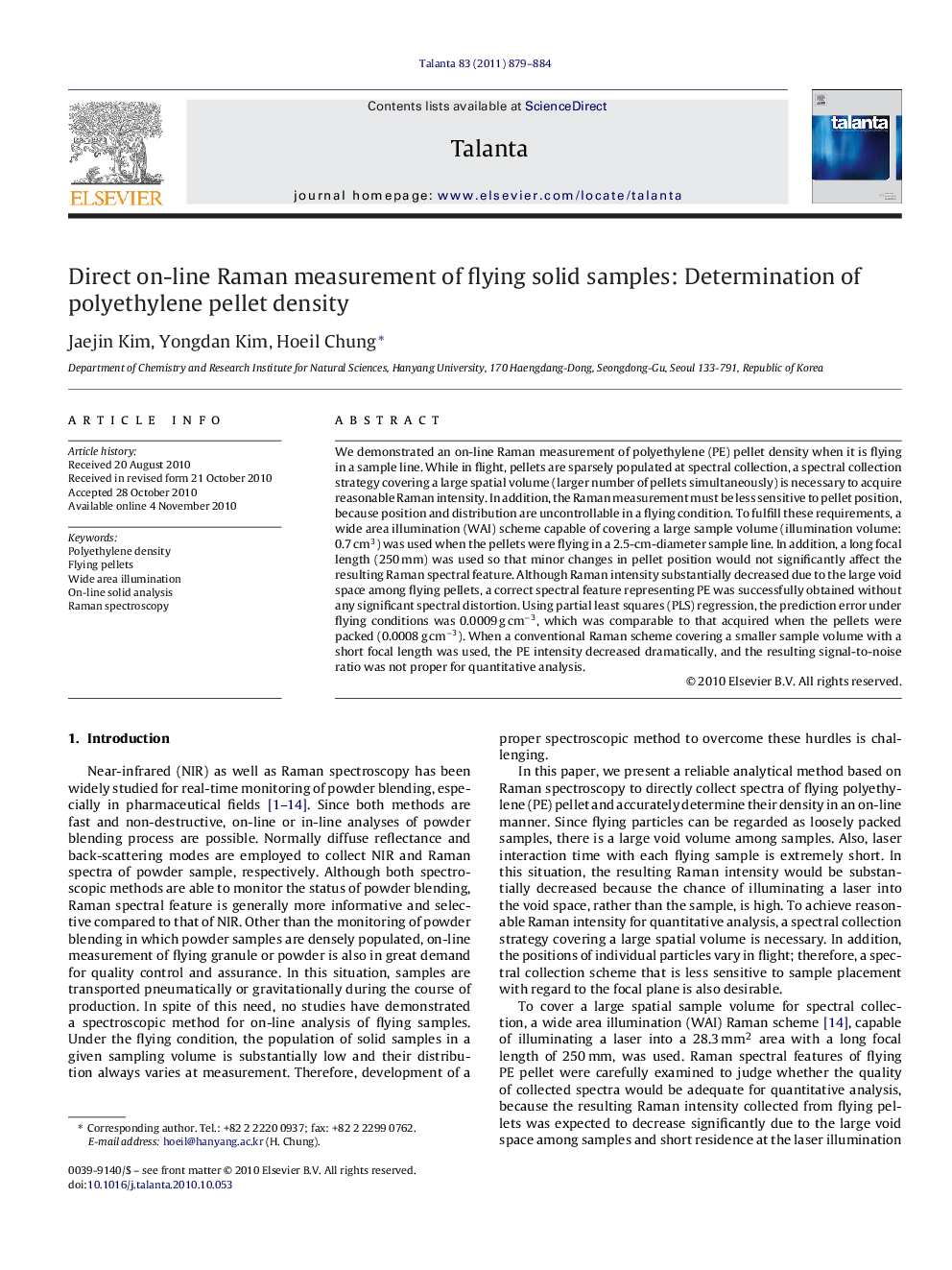| Article ID | Journal | Published Year | Pages | File Type |
|---|---|---|---|---|
| 1245055 | Talanta | 2011 | 6 Pages |
We demonstrated an on-line Raman measurement of polyethylene (PE) pellet density when it is flying in a sample line. While in flight, pellets are sparsely populated at spectral collection, a spectral collection strategy covering a large spatial volume (larger number of pellets simultaneously) is necessary to acquire reasonable Raman intensity. In addition, the Raman measurement must be less sensitive to pellet position, because position and distribution are uncontrollable in a flying condition. To fulfill these requirements, a wide area illumination (WAI) scheme capable of covering a large sample volume (illumination volume: 0.7 cm3) was used when the pellets were flying in a 2.5-cm-diameter sample line. In addition, a long focal length (250 mm) was used so that minor changes in pellet position would not significantly affect the resulting Raman spectral feature. Although Raman intensity substantially decreased due to the large void space among flying pellets, a correct spectral feature representing PE was successfully obtained without any significant spectral distortion. Using partial least squares (PLS) regression, the prediction error under flying conditions was 0.0009 g cm−3, which was comparable to that acquired when the pellets were packed (0.0008 g cm−3). When a conventional Raman scheme covering a smaller sample volume with a short focal length was used, the PE intensity decreased dramatically, and the resulting signal-to-noise ratio was not proper for quantitative analysis.
